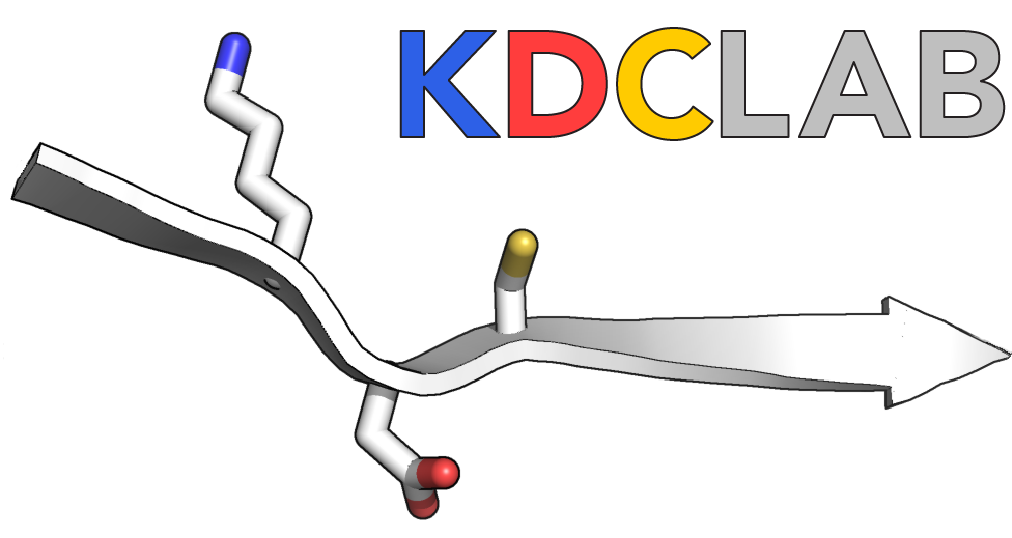The Corbett lab uses biochemistry, structural biology, and genetics to study chromosome organization, recombination, and segregation in mitosis and meiosis. A new focus is the molecular mechanisms of novel bacterial immune systems, some of which are related to mammalian innate-immune pathways.
Meiotic Chromosome Organization and recombination
In meiosis, homologous chromosomes must find one another and physically associate through DNA recombination to form “crossovers”, in order to segregate properly to produce haploid gametes (in humans, sperm and egg cells). We study the architecture of a conserved meiosis-specific protein complex called the chromosome axis, which organizes each chromosome into a linear array of chromatin loops, and regulates meiotic recombination.
Schematic of meiotic chromosome axis assembly by the capture of loop-extruding cohesin complexes by filamentous chromosome axis core proteins.
Our work has focused mainly on the HORMA domain proteins (HORMADs), which function as master regulators of meiotic recombination through the recruitment and control of recombination proteins. We showed that the HORMADs self-associate through interactions between their N-terminal HORMA domains and short C-terminal peptide motifs we call “closure motifs” (Kim, Rosenberg et al. 2014, West et al. 2018). We are currently exploring how the HORMAD assembly regulates meiotic recombination, and how its assembly and disassembly are controlled.
Our current efforts are focused on elucidating the overall architecture of the meiotic chromosome axis, which includes the DNA-binding cohesin complexes and “linker” proteins that, while poorly conserved on a sequence level, are nonetheless shared across eukaryotes and constitute a critical component of the chromosome axis structure. We are also exploring how recombination regulators, called the “ZMM” proteins in S. cerevisiae, recognize specific DNA recombination intermediates and promote inter-homolog crossover formation.
bacterial antiviral defense pathways
Schematic of CBASS pathway gene organization (A) and antiviral signaling (B). Our work to date has focused on Type III CBASS systems, which encode HORMA and Trip13 proteins for infection sensing.
Our interest in HORMA domains prompted us to explore the mechanisms of the bacterial CBASS pathway, which protects bacteria against viruses called bacteriophages. We found that one family of CBASS pathways encode the first-known bacterial HORMA domain proteins and TRIP13-like ATPases, which function in infection sensing (Ye et al., 2020; Lau et al., 2020). We are now exploring the mechanisms of other CBASS systems, to learn how these systems sense infection and mediate antiviral protection.
In addition to CBASS, bacteria encode a startling variety of protective defense pathways. We are exploring the molecular mechanisms of specific defense pathways that have co-opted canonical genome-organization machinery for new functions.
SARS-COV-2
Domain schematic of the SARS-CoV-2 N protein. Two ordered domains are flanked by three intrinsically-disordered domains, which mediate oligomerization and RNA-mediated phase separation.
The COVID-19 pandemic in 2020-2021 spurred us to explore the structure and function of the SARS-CoV-2 Nucleocapsid (N) protein. This abundant protein is critical for many steps in the viral life cycle, including RNA synthesis, host immune suppression, and packaging the 30 kb genomic RNA into developing virions. We determined the structure and oligomerization properties of the SARS-CoV-2 N protein (Ye et al. 2020), and collaborated with Don Cleveland’s lab at UCSD to explore this protein’s RNA-mediated phase separation properties (Lu et al. 2021). We are currently characterizing N-targeting single-domain antibodies as potential therapeutic or diagnostic tools. We have also collaborated with Jeff Esko’s lab at UCSD to show that the SARS-CoV-2 Spike protein recognizes both cell-surface glycans and the ACE2 receptor during infection (Clausen et al. 2020).



